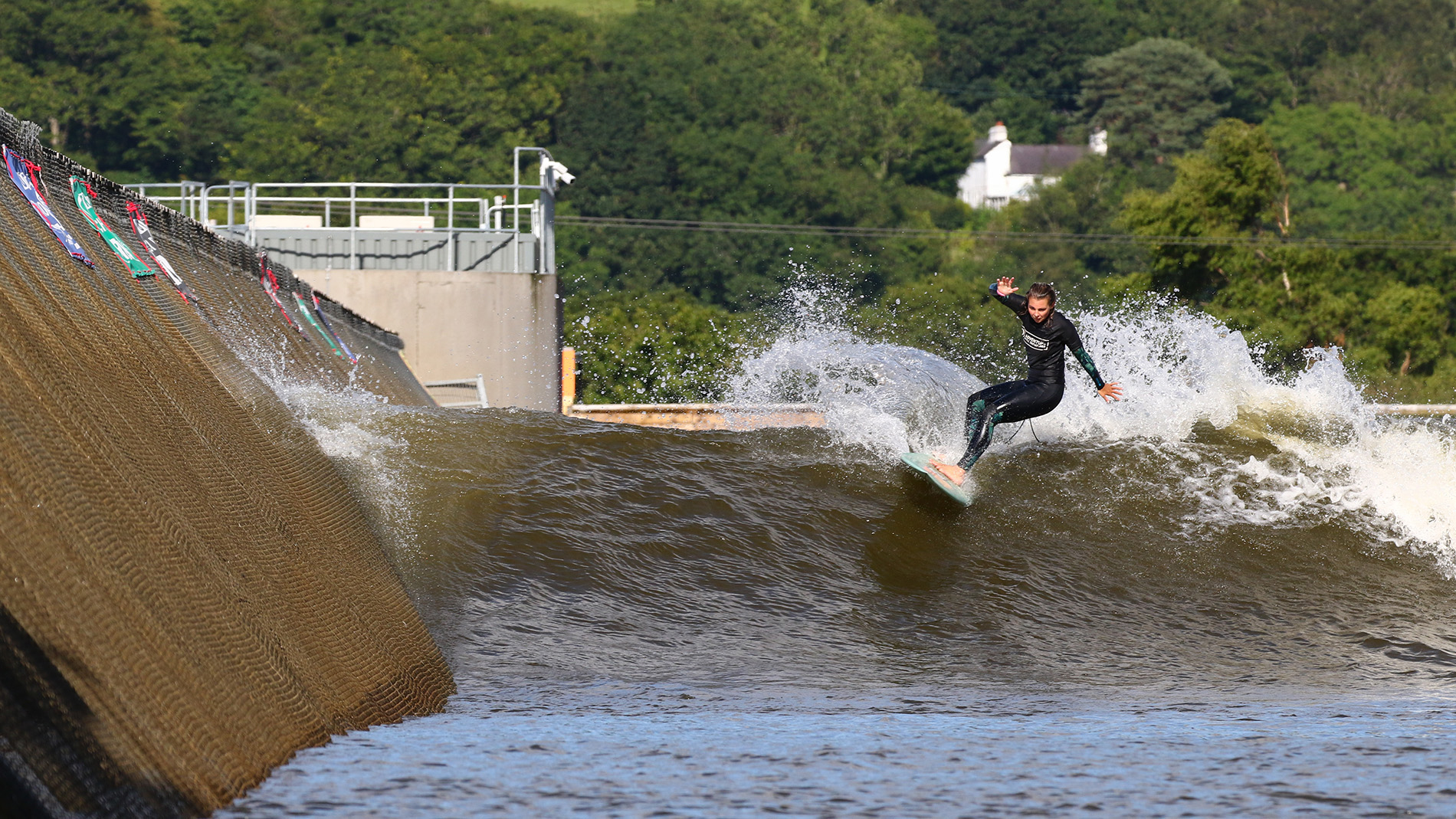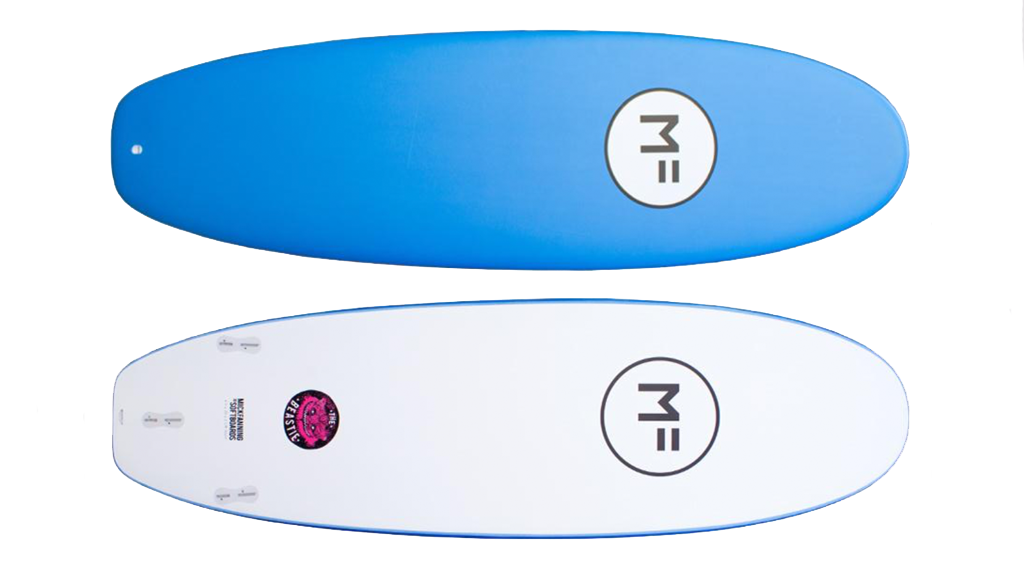Learn to surf: Top 5 beginner tips from wave pool pro Delyth Darlington

Learning to surf in a wave pool is different from leaning to surf in the ocean. But the basics that fast-track surfers from kook to capable are constant. A bigger board, practicing your pop-up and finding that paddle sweet-spot help in waves regardless of whether they are salted or fresh. Most importantly, to tie all these pieces of information together you need a good teacher.
For surf instructor Delyth Darlington the experience of leaning to surf is fresh enough in her mind to clearly recall her first lesson in Costa Rica. “It was a defining moment. I remember thinking ‘this is incredible I have to do this again.’”
She went on to learn the basics, improved during global surf trips and then got her ISA certification as a surf instructor. The most amazing thing about Delyth’s surf path is her quantum leap in improvement through the wave pool at Adventure Parc Snowdonia.
“One of the many perks of working here is that you get access to staff surf sessions. That was just amazing. I used every opportunity I could to get on the waves. I progressed from the beginner wave to the advanced in just about two months.”
In this, our latest Tips n Tricks feature, Delyth shares her stoke and dishes spot-on pointers for learning to surf in a wave pool. We’ve peppered this article with a variety of YouTube clips to round out Delyth’s advice and create a short, concise study for beginning surfers. Every little bit of knowledge helps.
For a wave pool surfing location near you, check our Surf Planner.

#1 Choosing equipment – Think BIG!
The bigger your surfboard, the more buoyant it is. This will help you catch waves more easily. The more waves that you catch, the faster you will improve – simple! Keep this in mind as you start to progress to avoid downsizing before you’re ready. Sure, the attraction of a fancy shortboard is way higher than that of a trusty old 8 footer to most of us, but having made this mistake myself, I can assure you that all you’ll manage to do is add a few years on to your learning process. Stick it out on your big board for a while and enjoy learning to maneuver it correctly. We surf because it’s fun. So don’t let your board choice take that fun away!
#2 Paddling – Find that sweet spot
Paddling is just like swimming but on a surfboard right? Wrong! There is much more to it than you might think, and since the majority of your surf sessions are spent paddling around, a good technique is important. Get off to a good start by reducing drag – caused by incorrect positioning on the board. Take notice of the way your board lies flat on the surface of the water before you get on it. This is also how it should look after you get on it. Shuffle yourself up and down the board slightly until you find this sweet spot, remembering to keep your back arched and your chest high, and your paddling will be much easier and more effective.
#3 C
If you have prepared yourself correctly, catching a wave should be fairly straightforward! You’ve picked one out, lined yourself up and started to paddle, now it’s time to really commit to it. Have the confidence, determination, and belief that you CAN catch this wave. If you hesitate, you will lose concentration and miss your opportunity. This more psychological aspect of surfing will develop with practice, the more waves you go out and catch – the more confidence you will have in yourself!
#4 Standing up – Practice makes perfect
As a beginner, watching experienced surfers effortlessly “pop” up to their feet can leave you feeling as though you have a long road ahead of you! Don’t be intimidated. There are several different methods for standing up which suit various physical abilities, so spend some time figuring out the best one for you. Rather than waiting until your next surf session to put it into practice, repeat the steps at home, in the gym, during the adverts on TV – whenever! Repetition will build muscle memory and one day your pop-up will become second nature to you. Remember, those surfers you are watching now were beginners once too, so be patient and keep
#5 Turning – Don’t look down!
Learning how to turn your surfboard is a great feeling because you are now in control! You will be able to ride the waves for longer, and gradually progress to perform more varied and complex maneuvers. But where should you start?! Once you have paddled, caught the wave, then popped-up successfully, start with turning your head. Keep your eyes focused on the direction you want to go in, and the rest of your body will begin to respond. A common bad habit among beginners is to look down at the board after the pop-up. This locks up the body making it difficult to turn the board. Pay attention to this the next time you go surfing, being aware of a bad habit is the first step to fixing it!
Trackback from your site.
Related Coverage

Can You Practice Surfing in a Pool? – Zion Waves
| #
[…] Practicing in a regular pool can be great for honing your skills, but we don’t all have access to one of them. If you can get to a wave pool, you can find some tips about learning to surf in one of them from Wave Pool Mag. […]
Learn to Surf in a Wave Pool | UNIT Surf Pool
| #
[…] to surf in a wave pool is a little different than learning to surf in the ocean, but according to Wave Pool Mag, “the basics that fast-track surfers from kook to capable are […]